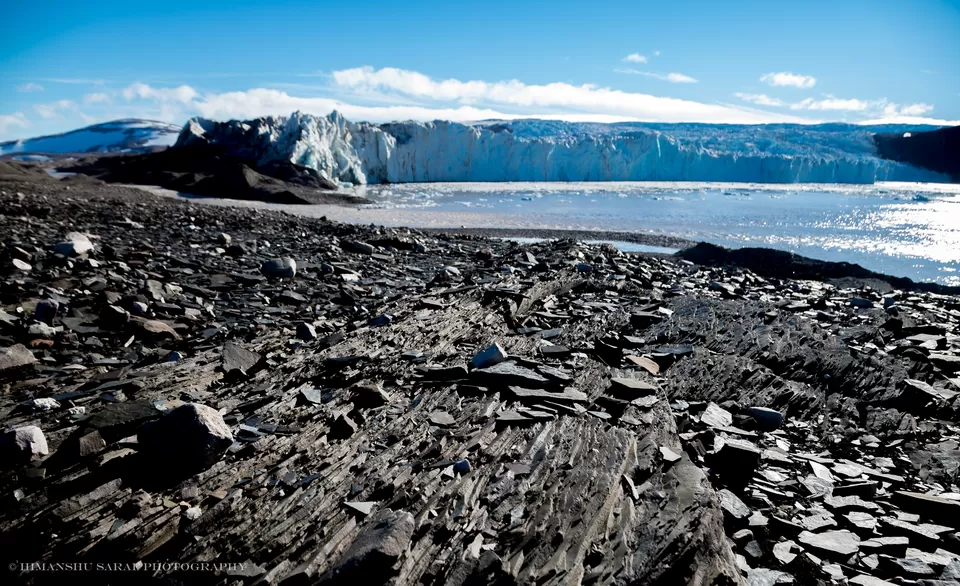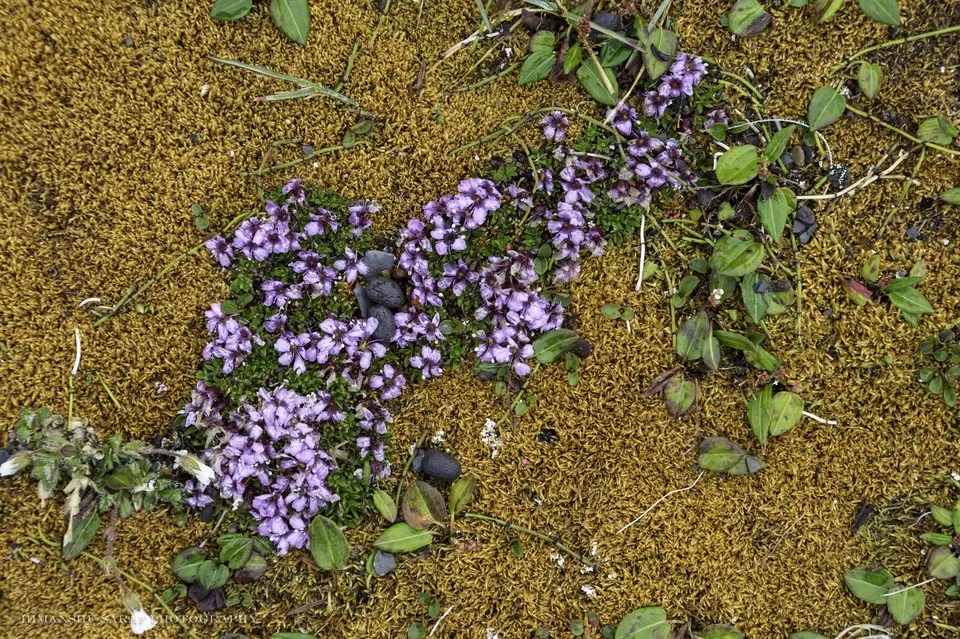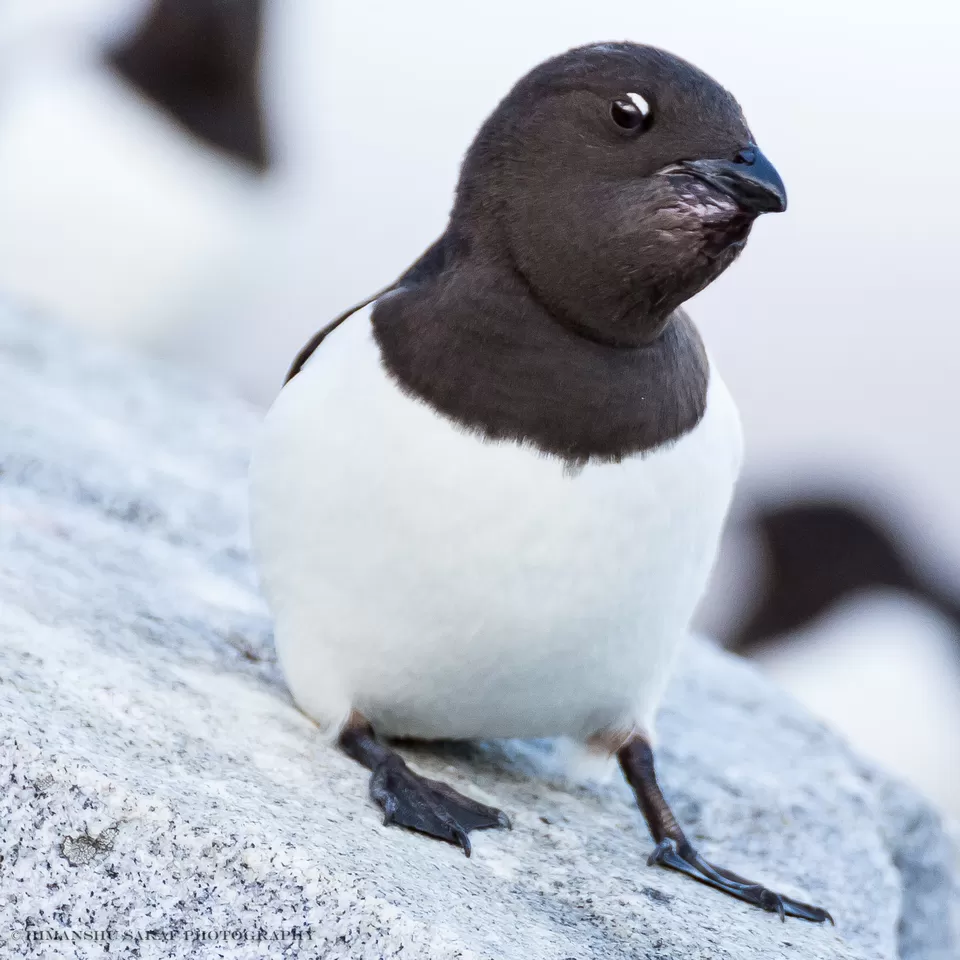

And when I say land’s end, I literally mean beyond any land on earth, all the way to the Arctic region just 920 kms from the North Pole, where it’s just sea and ice all around, far far away from even the remotest island.
Everyone has a dream destination, or an idea of it, however vague it be, the kind of place that wants us to leave everything behind, go out into the world, look deep into our hearts and find out what it truly wants and then go for it. For me that place has always been the North Pole. Be it the quintessential image of a polar bear digging out a seal from the burrows in the Arctic sea ice, or a giant blue iceberg floating by the side of the ship or the beauty of a majestic fjord, something has always drawn me towards the North Pole. And somehow, last year the pull got so strong that I could no longer resist and caved in. Thus began the greatest adventure of my life so far!
The travel window for the Arctic is limited to roughly between June and August, due to the extreme cold and lack of sunlight for the rest of the year. After much deliberation and fairly extensive planning, I finally managed to book an expedition cruise to the Arctic for 11 days in July 2016.
First of all, the Arctic isn't a very well defined place, loosely speaking anything north of 66° latitude is part of the Arctic region and that would include parts of Russia, Scandinavia, Greenland, Canada and Alaska. So you can visit the Arctic from any of these places. One of the most popular destinations in the Arctic, and the one I visited, is an archipelago called Svalbard, which is a part of Norway but located quite north of the mainland Norway.

I boarded a small expedition cruise ship from Longyearbyen, the capital city of Svalbard. Longyearbyen was a mining town historically and is now the starting point for most expeditions and tours in Svalbard. The ship was small with only 50 odd passengers and I preferred the personal attention that a small ship could provide in comparison to a large cruise liner.
The plan was to circumnavigate the archipelago of Svalbard over the next 10 days and stop at places of interest from a wildlife, nature or history perspective. During the course of these 10 days we were also supposed to go north of Svalbard crossing the 80 degree latitude, into the sea ice, which is the home of the Polar Bear!
So over the next 10 days we went around the island and each day we would get out of the ship about twice or thrice in small boats called Zodiacs. Zodiacs are like white water rafts but are motor driven. Each of these outings would be 3-4 hours long and would either involve cruising around in the boat and admire the scenery or the wildlife or if the conditions permitted landing on the shore to take a hike and explore the flora and fauna on the shore.

Svalbard is home to roughly 10-15% of the global polar bear population (about 20-30 thousands) and although the polar bears prefer to live on the sea ice up north many are found on the shore as well. Polar bears are predators and can attack human beings, therefore the law prevents people from approaching the bear closely. That’s why whenever we are out in the sea, if there is a possibility that there could be a bear onshore, we would either not land or land after safety precautions. These precautions meant a team of expedition guides would land first, with loaded rifles, and they would scan the area first and if found safe set up a perimeter. We would then get onshore and would stay within that perimeter. In the extreme case a polar bear approaches us the guides would first scare it away using a flare and if that doesn’t work, they would have to shoot the bear. That’s something no one wants to do or even see, so the expedition team makes its best efforts to ensure that all landing onshore are safe and away from polar bear sites.

For the first three days, we spent most of our time admiring the otherworldly vistas from the deck of the ship, or examining huge icebergs upclose while cruising in a zodiac, or checking out flocks of Kittywakes, one of the more popular and common birds of the Arctic. We got a good look at the Muhlbacherbreen glacier and the naturalist on the team explained in great detail about how the glaciers are formed and how icebergs are created when a big chunk of ice breaks away from the glacier. Serendipitously, we saw the glacier calving and heard the booming sound of the exploding ice as it fell into the water. Sometimes you hear sounds even before the glacier breaks so you can anticipate a calving but the actual calving may not happen for days, or it may happen the very next minute. That’s why I consider myself lucky to witness one, and a second one a few days later.

We also did a several hikes to appreciate the variety of vegetation on Svalbard. Due to the severity of the weather vegetation doesn’t grow tall in the Arctic and is usually lush on island with a lot of birds as the bird droppings act as nutrients for the plants. The grazers such as reindeer depend on this vegetation for their survival and in winters, when there is very little vegetation and mostly covered in ice, life can be very difficult for the reindeers who have to break through the ice to reach the plants. Not all of them survive the winters. Reindeers do not hibernate but they can reduce their body temperature in the winter to prevent loss of heat.

I remember the excitement generated when we had our first polar bear sighting. It was on the 4th morning of the cruise and everyone was getting a little anxious with anticipation. The weather had not favoured us so far and it had been raining for most part so we were a bit worried as well. We were supposed to make a landing on the shore at Sundneset after lunch but one the guides spotted a bear on the nearby island of Freemansundet. The bear was too far away when it was first spotted and it needed a master spotter to locate it. This changed the whole plan! Soon the ship was heading in that direction to get as close as possible so that we can then go out in zodiacs to approach the shoreline and have a closer look at the bear. This is where being in a small ship really pays out. A big ship won’t be able to change its course that fast or get so many people out in zodiacs quickly. We ended up seeing three bears on the shore although they were all quite far away. This was a mixed feeling – excitement of watching our first bears and the apprehension that future sightings might be from a similar far off distance.
This fear turned out to be unnecessary as we had some wonderful sightings of polar bears during the rest of the expedition. This included several large male bears, a few young male bears, a mother bears with two cubs and many other mother bears with a cub each. In all we saw 24 bears which is by the standards of such voyages, an extremely good number. We saw bears on the shore at a distance, in the water swimming, on the sea ice in the mist, on the ice on clear sunny days a few meters away from us and on the edge of the shore looking straight at us in the zodiacs.

However, the best part always was watching a polar bear cub with his mother. A female polar bear gives birth to 2 or 3 cubs on the sea ice and only 1 or 2 of those survive by the age of 3. A young cub is about half a kg at birth and can easily grow up to 500kgs or more. The mother takes care of the cubs for 2-3 years after which the young bears go their own way. During this period the mother is very protective of the cubs and that behaviour is very apparent. Other male bears would kill the young ones, so a mother bear is very weary of large males. We saw one bear running away with her cub at the sight of a male bear and she didn’t stop till she was clear of harm’s way.

But the Arctic is not just about bears. We saw quite a few walruses, seals, arctic foxes, reindeers and even the two largest animals on the planet – the Blue Whale and the Fin Whale. It was fascinating to see all these animals in their natural environment going about life as if unaware of our presence. The arctic fox is very elusive and is generally found near bird cliffs looking for bird chicks or eggs. We saw a few foxes and on one occasion caught a fox stealing a bird’s egg. Walruses and seals are more lazy, they like to lie on the shore or on rocky outcrops or go into the water once in a while for a swim. While seals have to be watch out for the polar bears, the walruses owing to their large size don’t usually have to worry about attacks from the polar bear.

The Arctic also has a variety of birds such as fulmars, kittywakes, skua, seagulls, geese, ducks, ptarmigan, sandpiper, arctic terns, guillemots, little auks and puffins. While you can hardly spend a few hours without seeing a few fulmars or gulls around your ship looking for fish to show up in the ship’s wake, the real excitement of watching the Arctic birds is in their nesting colonies. We saw 3-4 such bird colonies, however the most outstanding was the colony of Brunichss Guillemots at Alkefjillet. It was a beautiful evening as the sun shone behind the clouds and we took to the zodiacs on the heavily choppy waters to witness several hundred thousands of Guillemots hanging on to dear life at the narrow ledges of the vertical cliffs against the strong winds while keeping an eye out for the arctic fox as well. When the birds took to the sky, their sheer number was enough to almost hide the sun.
We also got to spend some quality time, although after a relatively difficult hike up a rocky cliff, at a colony of Little Auks and observe their behaviour from close quarters. Little auks set up their nest underneath big rocks where the chicks stay and would spend most of the time sitting on top of the rocks watching out. The auks go out into the water and return with their mouth full of food and then sit on the top of the rock for a while assessing the surroundings. When they are assured about the safety of chicks they would sneak under the rock to feed the chicks and soon make another trip to the sea.

However, my favourite Arctic bird is the Arctic tern. It’s not only the most elegant and beautiful Arctic bird in my opinion but also the most active. The Arctic tern has the longest migration of any animal or bird on the planet as it makes its way from the Arctic to Antarctica and back every year in search of warm weather, that’s almost 20,000 kms each way!

Watching a polar bear on the sea ice is a once in a lifetime experience but Arctic is not just about wildlife. A big surprise element of the voyage was the spectacular landscape. I was expecting sea and ice for most part but the terrain varied from barren polar deserts to islands lush green with vegetation to the amazing vistas created by the hundreds of fjords in the Svalbard archipelago, like this one at Magdalenefjord:

The Arctic is a wonderful place and one of the remotest areas to witness some unique wildlife and landscape but is being significantly affected by global warming and the climate change, more than any other part of the world. The sea ice is the home of the polar bear, and the bears rely on it to find their favourite food, the seals. Every summer as the sea ice melts and recedes north, the bears follow along but some bears fall behind and are forced to spend their winter on the land where finding food is quite difficult for them. Many of them don’t survive.
With global warming, more and more sea ice is melting each year and according to some estimates it might be completely gone by 2030. This would threaten the existence of the polar bear and several other animals in the Arctic. If you want to give yourself a chance to experience this magical part of our world, the time to go is now.

For more photographs, please visit my Facebook Page and Instagram:
https://www.facebook.com/himanshusarafphotography/
https://www.instagram.com/himanshusarafphotography/
#Arctic #Northpole #Svalbard #Spitsbergen #Cruise #Polarbear #Norway #Longyearbyen #arcticcircle

